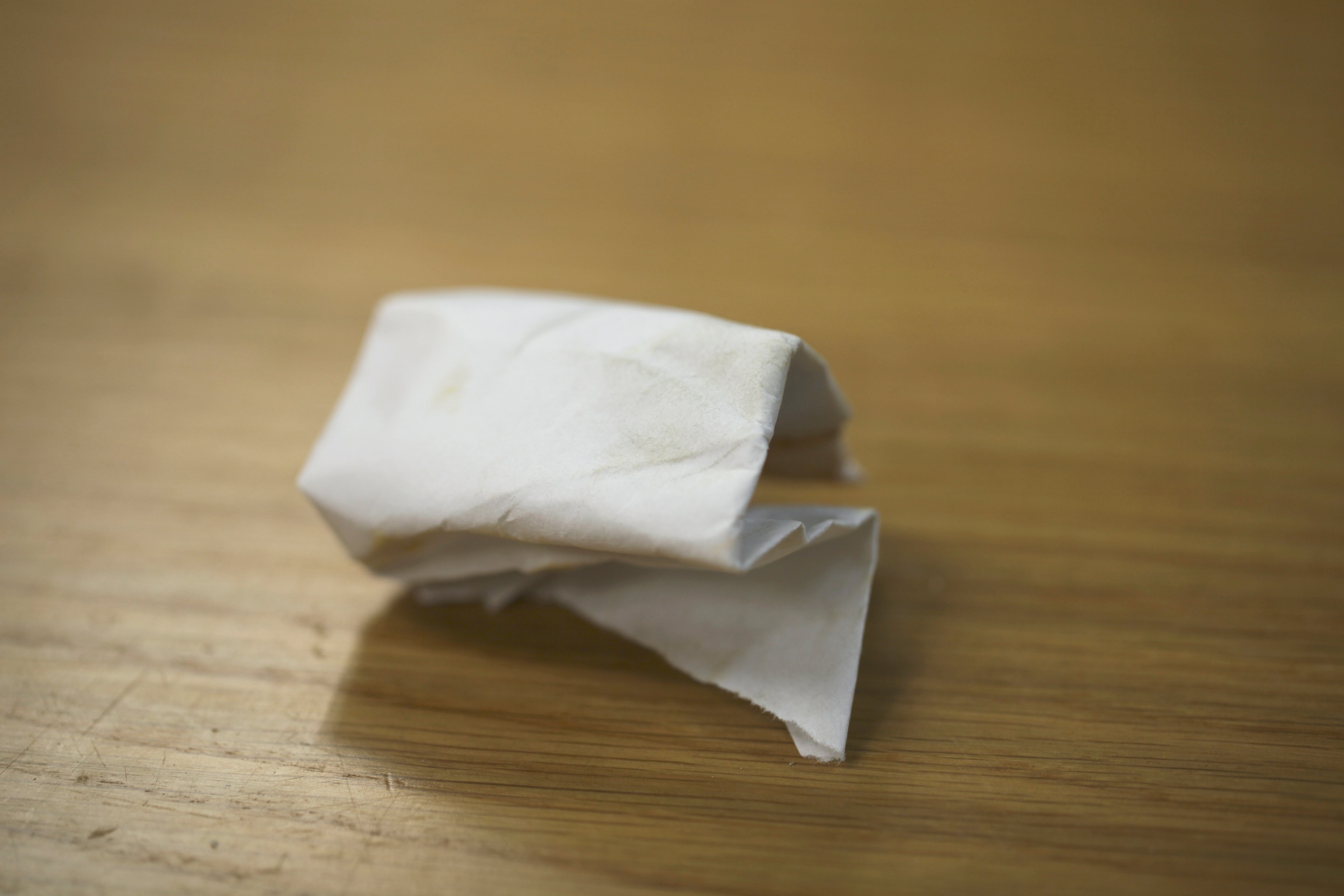This picture is what is left when I finish my sandwich from Clover.
2008:
When we launched the MIT in 2008 with the goal of testing and developing our food our goal for packaging was simple: hold the food and not cost much. We made decisions like one size coffee cup which helped simplify things on the truck, limit the amount of caffeine we were handing to customers, and I suspected would give us some buying power in the future. We used foil on our sandwiches, common for food trucks. We chose fry boats for cost, because they kept the fries from steaming in their heat, and because they had a fair-reference, which we thought fun.
2010:
As we matured our goals for packaging evolved. I became hyper-focused on waste. It was just sickening to me how much waste restaurants produce, and I was seeing it up close for the first time. We streamlined our packaging and started making decisions to influence customers. This included using butcher paper for sandwiches. Only handing out bags if a customer asked for a bag. Only wrapping to go if a customer asked for to go. Not pre-loading drinks with lids (they are available for self-serve, but we don’t put them on every drink automatically). The largest change we made at that time was moving to 100% compostable packaging. This was a project I’d been working on for 2 years and when Harvard Square opened I believe it was the first restaurant in the country to have 100% compostable packaging. No recycling. No trash. Just compost. Since making this change we’ve consulted with a number of other restaurants about approaching a similar goal and we’re really proud of the leadership role we’ve been able to take here.
2013:
I’m now starting to think harder about convenience. We’ve been concerned about the customer experience since day 1, but there’s not questions we’ve made choices that make the packaging experience less good. If you compare us to McDonald’s or even Chipotle the end of your meal is MUCH less waste, without a question. But there’s also no question that it’s a much less EASY experience. We ask more of our customers. Comparing:
Coffee and breakfast sandwich at Clover
– 2″ x 6″ strip of compostable butcher paper
– 12 ounce compostable paper cup
Coffee and Breakfast sandwich at McDonald’s or Dunkin’
– Styrofoam Cup with plastic lid (if you order small at Dunkin you can get a paper cup, trick one of our contractors taught me)
– Stir stick
– Cream and sugar
– Napkins
– Bag
– Sandwich wrap (12″x12″ waxed non-compostable paper)
So how to we bridge this divide? I’m afraid our current packaging approach has some negative effects:
1) People tend not to buy multiple meals for togo
2) Customer confusion, especially for first-time customers or less bought-in customers
3) Messy meals. I think the eating experience feels overly messy to some.


